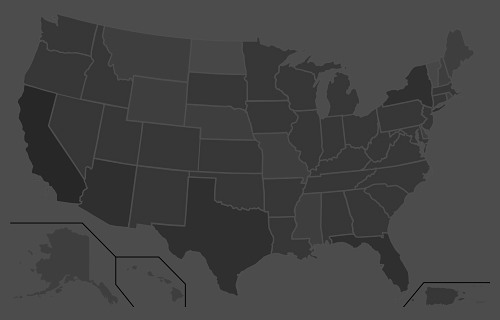“Our added winter moisture and active calling period led to a very long nesting and hatching season, starting in late April and extending into early summer, with chicks hatching as late as early July,” O’Dell said. “From a population standpoint, we are out of a deficit for the first time since 2001-2002. Quail are starting to pop up in places they haven’t been seen in a while.
“If you’ve never had the chance to experience what Arizona quail hunting built its name on, then this would be the year to get out and enjoy it.”
Meanwhile, hunters should note that the season for Mearns’ quail doesn’t begin until Dec. 4. It’s summer rainfall that plays a key role in nesting success and population numbers of this species. After a spotty and relatively weak monsoon across southern Arizona, these birds are likely to be abundant only in pockets that received sufficient precipitation this summer.
A valid Arizona hunting or combination hunt and fish license is required for all hunters 10 and older. Those hunters under 10 must either have a valid hunting or combination hunt and fish license, or be accompanied by an adult who possesses a valid hunting or combination hunt and fish license. Licenses can be purchased online or at license dealers statewide. A youth combination hunt and fish license (ages 10 to 17) is $5.
The general bag limit is 15 quail per day in the aggregate, of which no more than eight may be Mearns’ quail (when the Mearns’ season opens Dec. 4). The general possession limit is 45 quail in the aggregate after opening day, of which no more than 15 Gambel’s, scaled or California quail in the aggregate may be taken in any one day. After the opening of the Mearns’ season, the 45-quail possession limit may include 24 Mearns’ quail, of which no more than eight may be taken in any one day.
More quail-hunting information can be found on the department’s website at https://www.azgfd.com/Hunting/. Another resource for both new and experienced hunters alike is “An Introduction to Hunting Arizona’s Small Game.” Written by Randall D. Babb, the 196-page, full-color book covers where and how to hunt small game birds (like quail), squirrels, rabbits, ducks and geese. It also includes how to prepare and cook your harvest, with illustrations and recipes. The book can be ordered for $16.95 at www.azgfd.gov/publications.
Finally, hunters should check out O’Dell’s techniques for field-dressing quail at https://www.youtube.com/watch?v=3gRwZAcWzzk.
####
Publishers Notes: OUT OF STATE HUNTERS, FISHERMEN & OUTDOOR ENTHUSIASTS; Due to the Covid 19 pandemic, there could be limitations for OUT of STATE hunters, fishermen and other outdoor enthusiasts to include a 14-day quarantine requirement or negative COVID-19 testing alternative. Please check with the State's Department of Natural Resources BEFORE you travel or apply for the 2020 Fall Hunts.
Disclaimer: The views expressed on this site are that of the authors and not necessarily that of TBC Press
South Dakota Nest Predator Bounty Program Approved for 2021 and 2022
Submitted by: TBC Press
Posted on: 03/08/21
The Backcountry Press
The country's premier daily HUNTING, FISHING & OUTDOOR news in the USA and around the globe. Read whats happening in your neck of the woods & beyond.
© 2020 TBC Press - All Rights Reserved Website Design by:
News # 14254
As soon as the program launches on April 1, GFP will provide a weekly giveaway for all youth (under the age of 18) who participate in the program. The giveaway will consist of a GFP-sponsored trapping package that includes three live traps, knife and the National Trappers Association Trapping Handbook. Follow our GFP Facebook page for more details.
GFP will also enhance the ETHICS SD program, which doubled in size in 2020 reaching 110 new students in 11 counties. ETHICS SD is a partnership between trapping organizations, GFP and 4H where youth learn trapping skills, fur handling techniques, and elements of wildlife management.
“Educating youth on the importance of the trapline and wildlife management are key to ensuring our outdoor traditions remain strong for future generations,” said Robling. “Trapping provides an experience to explore the outdoors and create lasting stories and memories while making a difference for managing wildlife in South Dakota.”
With help from mother nature, resulting in a mild winter, enhanced efforts on habitat management and the continuation of the nest predator bounty program we should expect to see fantastic bird numbers for the 2021 pheasant season, Robling added.
Individuals are encouraged to share their trapping and outdoor memories by using #SDintheField on social media. For more details on the 2021 program guidelines, visit https://gfp.sd.gov/bounty-program/.
####
Publishers Notes: Our country is still battling COVID-19. To avoid the spread of this virus and continue to enjoy outdoor activities, ALL outdoor enthusiasts (man, woman, child) should follow the guidelines set by nps.gov. These guidelines include; social distancing, the Leave No Trace principles, including pack-in and pack-out, to keep outdoor spaces safe and healthy.
At their March meeting, the South Dakota Game, Fish and Parks (GFP) Commission approved a resolution to authorize the Nest Predator Bounty Program for 2021 and 2022. The resolution specifies that the 2021 and 2022 program will include a payment of $10/predator with a maximum of $500,000 in bounty payments each year. The Commission amended their January resolution, modifying the dates of when the program will start and end. The GFP Commission unanimously agreed to run the 2021 program from April 1 through July 1, unless the $500,000 maximum is reached.
In 2022, the program will begin on March 1 for youth under 18, then open to all South Dakota residents beginning April 1 and running through July 1, unless the $500,000 maximum is reached.
“This program enhances pheasant and duck nest success at localized levels and encourages families to get involved in wildlife management,” said interim GFP department secretary Kevin Robling. “We have rich trapping traditions here in South Dakota and this program is designed to encourage youth and families to step outside and enjoy our incredible outdoor resources.”












